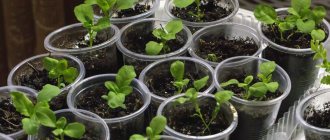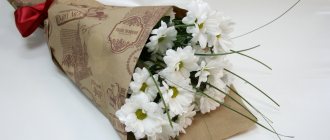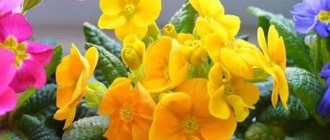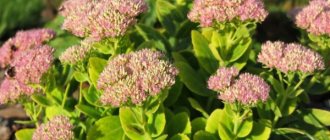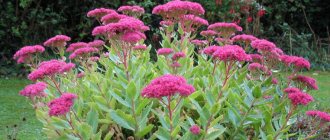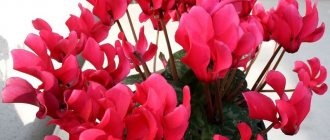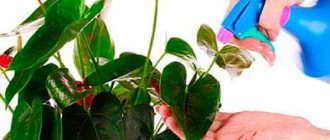Hydrangea is the most beautiful flowering shrub, which today is very popular among gardeners. Some not very conscientious sellers claim that this plant is very unpretentious and does not require special care or special knowledge.
Actually this is not true. Caring for hydrangeas is really not that difficult, but this care must be competent, taking into account all the features of this culture. Otherwise, it may simply not bloom or even die.
about the types of hydrangeas that grow comfortably in our cold climate, as well as the rules for planting and caring for this lushly flowering shrub in the article: “Frost-resistant hydrangeas in your garden.”
In this article we will talk about how to care for hydrangeas from late July to October. This is a very important period in the life of plants, on which the formation of flower buds for the next year, the correct formation of bushes and their normal overwintering depend.
Types and varieties of indoor hydrangea
Hydrangea is a plant whose height reaches one and a half meters. Belongs to the type of subshrubs. Has spreading leaves. They have small notches along the very edge. It is distinguished by very large inflorescences that reach up to 30 cm in length.
Varieties have been bred to create a large palette of colors. Let's look at the most common ones for home floriculture.
- Tree-like. A shrub whose height reaches 3 meters. The leaves are large and fleshy. Bright green hue. The flowers form a spherical sphere and reach a diameter of 25 cm. Flowers are most often colored milky or beige. One of the most unpretentious varieties.
- Large-leaved. The length reaches 2 meters. Suitable for both home growing and greenhouse growing. The leaves are quite large. The shoots are always light green. The variety is resistant to cold, so even in the winter season it feels great on a cold window.
- Paniculata. Looks like a large spreading shrub or small tree. The height reaches 6 meters. The leaves have an elongated shape. And the shoots turn brown with age. The plant is resistant to cold. The inflorescences gradually form a small pyramid. They have shades from milky to blue. By autumn, the flowers acquire a reddish or even brown tint.
Flowers also differ in the color that is inherent in them during flowering. There are varieties:
- red sensation;
- Early Blue;
- Europe;
- star;
- linear and so on.
However, the color of the inflorescences is affected not only by the variety, but also by the composition of the soil. For example, if it is sour, then a blue tint appears in the flowers. If it is more alkaline, then the pigment is pink or red. If the soil is neutral, then you will get boiling white flowers with milky splashes.
Varieties of home hydrangeas
Hydrangea is a beautifully flowering subshrub from the group of perennial garden crops. The leaves are quite large with pointed edges, their color is rich green. There are two types of flowers - large sterile and small fruiting ones, collected in spherical inflorescences, similar to large caps.
Pay attention to this photo: hydrangea at home is represented by these two varieties of flowers:
Flower colors vary:
snow white to cream color
Color pink
Lilac color
Purple color
Blue color
Light green
Most often, the most capricious variety of hydrangea – large-leaved – is grown at home. Also on the windowsills of many houses and apartments you can see other varieties of this beautiful flowering plant - tree-like, petiolate and paniculate hydrangea. In indoor cultivation, hydrangeas are much more compact than garden varieties, and their flowering periods are more extended.
Various varieties of home hydrangea - pictured below:
How to choose hydrangea in a store
It is believed that it is better to purchase flowers in specialized stores.
The first thing to do is look at the stem. It should be dense, elastic, and have an expensive green color. There should be no brown or yellow growths on the leaves. They should be juicy and bright green. If the hydrangea leaves are limp, dry at the edges, or have white or yellow spots on them, you should refuse to purchase.
Carefully examine the hat of flowers. It should be dense, rich, bright colors. If the cap is pale, and the flowers begin to fall when touched lightly, it means that the plants did not receive enough nutrients.
There is one general rule that should be applied to choosing a flower - it should look healthy, nourished and moisturized.
Description of indoor hydrangea
If you have not yet come across indoor hydrangea, then you have probably seen its older sister in gardens and flower beds. This perennial shrub with huge clusters of white flowers is popularly called “Destiny” or “Bride”. It looks almost the same, only the stems are much smaller.
This is a perennial subshrub covered with oval leaves framed by denticles. The spherical inflorescences can reach about 20 cm in diameter. The flowers are corymbose, racemose or umbrella-shaped. Large inflorescences located at the edges of the flower are sterile, and fruiting ones are usually small in size and located in the center.
Indoor hydrangea will serve as an excellent decoration for any home.
The peculiarity of hydrangea from other plants is that the color of its flowers depends not on the variety or some breeding rules, but on the properties of the soil in which the bush grows:
- neutral soil - cream or white;
- acidic soil - blue color;
- alkaline soil - pink or lilac.
At the same time, the petals themselves remain colorless, and the sepals of the flowers are responsible for the shades and decorative qualities of the inflorescences: it is they who acquire a bright color.
At home and if all the rules are followed, hydrangea can easily reach a height of 1 meter.
Care and replanting after purchase
It is not recommended to replant hydrangea immediately after purchase. The plant must get used to new conditions. Give her 2 weeks to 1 month to adapt.
In the future, the transplant procedure should be carried out at least once every 3–4 years.
If you ensure annual replanting into larger pots, you can ensure the fullest blooms your hydrangea can produce. The roots of the plant grow in width, so the volume of the pot must match.
Choose a pot that is slightly larger than the diameter of the one you purchased the flower in.
While the plant adapts, you can gradually acquire components for the substrate. You will need 1 part sand, two parts peat, two parts deciduous soil and 4 parts turf soil. All this is mixed and poured into the pot.
Do not forget that during the first stages of life in a new room, hydrangeas will require additional care in the form of fertilizing. It is better to buy mineral fertilizer intended specifically for indoor flowering plants. You can buy it in a specialized store. It is important not to overdo it, so dilute the fertilizer according to the instructions and water the flower in the amount indicated on the package.
Hydrangea does not like direct sunlight, but loves warmth and diffused light. Therefore, it is better to place it on a shaded window.
As soon as the hydrangea gets stronger, you can take care of it and replant it.
At first after purchase, namely, the first two weeks, it is better not to overwater the plant. It is necessary to moisten the soil as it dries. But spraying leaves and flowers from a spray bottle is highly recommended. This procedure must be performed once every two days.
Varieties of large-leaved hydrangea by flower color
There are a huge number of varieties of large-leaved hydrangea. Let's look at a few of the most popular ones, dividing them into color categories.
Light
Sister Therese (Soeur Therese):
- inflorescence diameter 30 cm;
- white inflorescences with a delicate lilac-pink tint change color to greenish-pink towards the end of flowering;
- blooms until September on last year's shoots;
- dense, spreading shrub.


